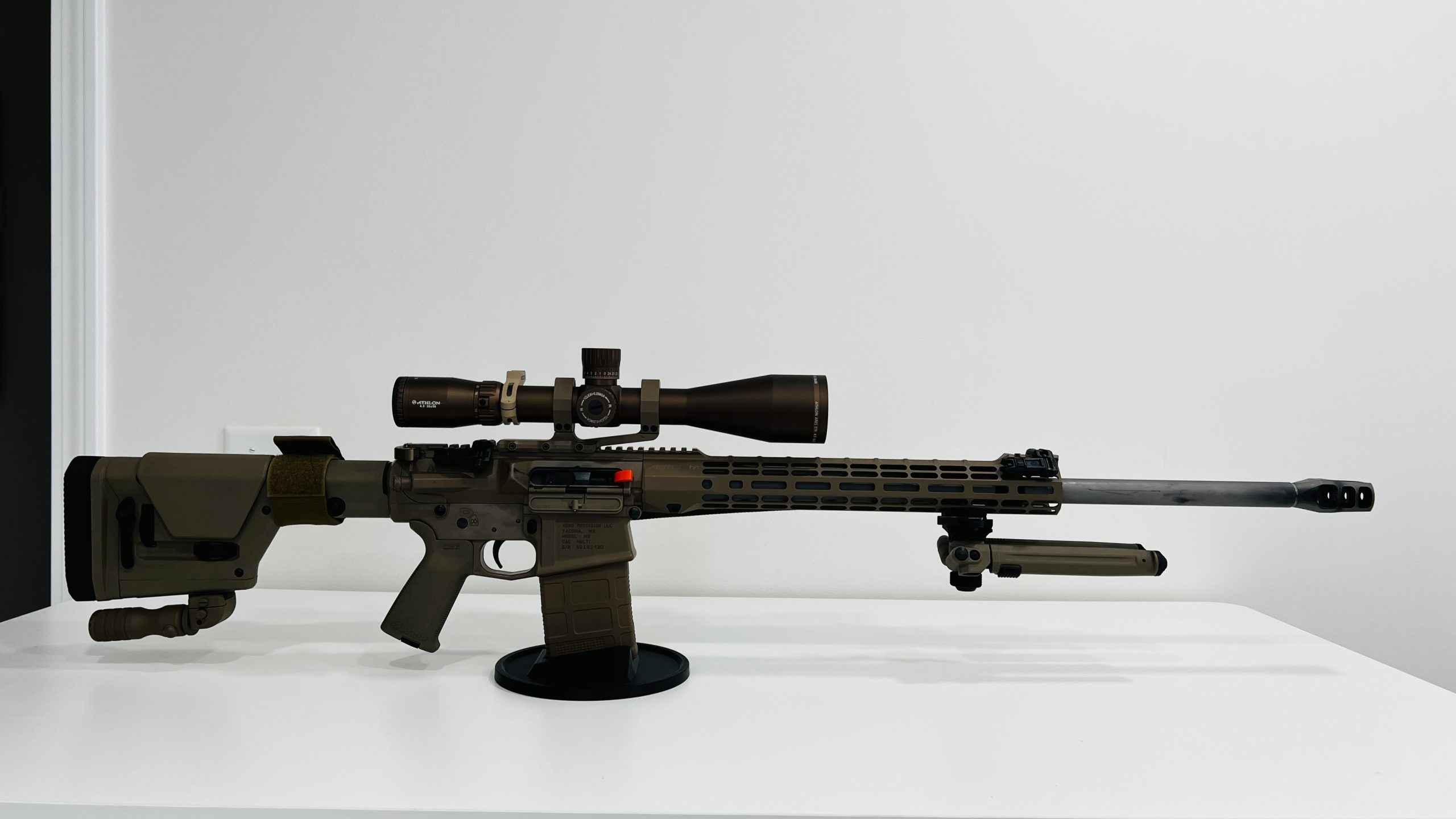
Categories:
The AR10 rifle, a robust and versatile gun platform, is celebrated for its adaptability and precision in a variety of shooting contexts. Central to maximizing the potential of this remarkable rifle is the effective use of mounting systems. These systems are critical as they allow shooters to attach various accessories such as optics, bipods, and lights, thereby enhancing the rifle’s performance and versatility.
Mounting systems for the AR10 can be classified into several categories based on their design and purpose. Picatinny rails, M-LOK slots, and KeyMod interfaces are among the most prevalent options available today. Each of these systems offers unique benefits in terms of stability, ease of attachment, and customization potential.
Picatinny rails have long been a standard in military and civilian applications due to their robustness and universal compatibility with a wide range of accessories. M-LOK (Modular Lock) slots provide a more streamlined profile that reduces weight while maintaining strength and flexibility. KeyMod interfaces offer similar advantages but differ in their attachment mechanisms, catering to shooters’ personal preferences.
Choosing the right mounting system is essential for optimizing an AR10’s effectiveness in specific scenarios—whether it’s long-range precision shooting or close-quarters engagements. Properly selected mounts ensure that accessories remain securely fastened under recoil stress while allowing quick adjustments as needed.
Understanding these mounting systems’ intricacies enables shooters to tailor their AR10s precisely to their needs. This ensures peak performance whether on the range or in tactical situations. As technology advances, so too do these mounting solutions continue evolving—providing ever greater levels of customization and reliability for enthusiasts dedicated to getting the most out of their guns.
Mounting systems for AR10 rifles are crucial for enhancing the functionality and versatility of this powerful gun. These systems provide a foundation for attaching various accessories such as optics, lights, lasers, and bipods, which can significantly improve accuracy and ease of use in different shooting scenarios. One prevalent type of mounting system is the Picatinny rail. Named after the Picatinny Arsenal in New Jersey, this rail system has become a standard due to its robustness and versatility.
The Picatinny rail features a series of ridges with consistent spacing that allows for secure attachment of accessories. Its design ensures that once an accessory is mounted, it remains firmly in place even under heavy recoil. Another popular option is the M-LOK (Modular Lock) system developed by Magpul Industries. Unlike the Picatinny rail’s continuous strip design, M-LOK uses a series of slots that reduce weight while still offering a strong mounting platform.
This lightweight feature is particularly beneficial for shooters who prioritize maneuverability without sacrificing stability or durability. The KeyMod system is another alternative worth mentioning. Developed by VLTOR Weapon Systems and Noveske Rifleworks, KeyMod employs keyhole-shaped slots that allow for direct attachment of compatible accessories. The open design aids in reducing overall weight and provides a sleek profile to the rifle. Lastly, some AR10 rifles might come with proprietary mounting solutions designed by specific manufacturers to work seamlessly with their particular models or accessory lines.
While these may offer enhanced integration and performance benefits tailored to specific needs, they often lack the universal compatibility found in standard systems like Picatinny or M-LOK.
Choosing the right mount for your AR10 rifle is a crucial decision that can significantly impact your shooting accuracy and overall experience. The AR10, known for its versatility and power, demands a mounting system that complements its robust design while meeting your specific shooting needs.
Firstly, consider the purpose of your AR10. Are you using it for long-range precision shooting, hunting, or tactical applications? Each purpose may require different types of optics and mounts. For instance, long-range shooters often prefer a solid one-piece scope mount with precise alignment to ensure maximum accuracy over extended distances. Hunters might lean towards lightweight mounts to reduce fatigue during prolonged use in the field.
The material of the mount is another critical factor. High-quality materials like aircraft-grade aluminum or steel offer durability without adding unnecessary weight to your rifle. Aluminum mounts are favored for their balance between strength and weight, making them ideal for most shooters.
Mount height is also essential; it should position your optic at a comfortable height relative to your eye when you are in shooting position. Too high or too low can cause discomfort and affect aiming speed and accuracy. Adjustable mounts provide flexibility if you frequently switch between different optics or need to make fine adjustments based on changing scenarios.
Lastly, ensure compatibility with your AR10’s rail system—typically Picatinny or Weaver rails—and verify that the mount securely attaches without any wobble or movement under recoil. A secure fit enhances stability and maintains zero even after multiple rounds fired.
In summary, selecting the right mount involves evaluating intended use, material quality, appropriate height, and compatibility with your gun’s rail system. By carefully considering these factors, you can enhance both performance and comfort during every shooting session with your AR10 rifle.
The installation process for AR10 mounts is a critical step in ensuring that the rifle is both functional and accurate. Before beginning, it’s essential to gather all necessary tools and components, including the chosen mounting system, a torque wrench, screwdrivers, Allen wrenches, and thread-locking compound.
Firstly, ensure the AR10 is unloaded and safely secured on a stable surface. Begin by removing any existing mounts or sights from the rifle’s rail system. Clean the rail thoroughly to remove any debris or oil that might interfere with proper adhesion of the new mount.
Next, align the base of the mount with the rail system on top of the receiver. Depending on whether you are installing a one-piece scope mount or separate rings, position them so that they provide adequate eye relief when looking through your optic. Insert screws loosely at first to allow for minor adjustments.
Once positioned correctly, apply a small amount of thread-locking compound to each screw to prevent loosening due to recoil. Tighten each screw incrementally in an alternating pattern to ensure even pressure distribution across the mount. Use a torque wrench set to manufacturer specifications (typically around 20-25 inch-pounds) for final tightening; this step is crucial for maintaining zero accuracy.
After securing the base or rings firmly in place, attach your optic according to its specific installation guidelines. Ensure it sits level and straight before tightening down any additional screws or bolts.
Finally, verify that everything is securely fastened by giving it a gentle shake test and checking alignment through dry-firing tests if possible. Properly installed mounts will maintain their integrity under recoil while keeping your optics consistently aligned for accurate shooting performance.
When discussing AR10 rifle mounting systems, it’s essential to delve into the popular brands and models that have established a reputation for quality, reliability, and performance. A few key players dominate this niche, offering a variety of mounts tailored to different shooting needs.
One such brand is LaRue Tactical. Known for their robust design and precision engineering, LaRue mounts are highly regarded in the shooting community. Their QD (Quick Detach) models are particularly popular due to their ability to maintain zero even after repeated attachment and detachment. This feature is invaluable for shooters who need to switch optics quickly without compromising accuracy.
Another notable name is American Defense Manufacturing. Their AD-RECON series stands out with its auto-lock lever system that provides a secure fit without the need for additional tools. The AD-RECON mounts are crafted from high-grade aluminum, ensuring durability while keeping weight to a minimum – a crucial factor for maintaining maneuverability in the field.
Nightforce Optics also deserves mention with their robust line of Unimounts and Direct Mounts designed specifically for AR10 platforms. These mounts are engineered to handle heavy recoil and provide rock-solid stability for high-magnification optics – making them a favorite among long-range shooters.
Lastly, Vortex Optics offers excellent options such as their Precision Matched Rings. While not exclusively designed for AR10 rifles, these rings offer an exceptional fit and finish that meets the rigorous demands of precision shooting.
These brands exemplify the innovation and craftsmanship that go into creating top-tier AR10 mounting systems. Each offers unique features catering to diverse preferences, ensuring that every shooter can find an ideal solution tailored to their specific needs.
Maintaining the mounting systems of your AR10 rifle is crucial for ensuring consistent performance and longevity of your equipment. The mounting system, which typically includes scope mounts, rail systems, and accessory mounts, plays a vital role in the overall functionality of your gun. Regular maintenance can prevent issues such as misalignment, corrosion, and wear that could compromise accuracy and reliability. Begin by periodically inspecting all mounting components for signs of damage or wear.
Look for cracks, bends, or any form of deformation that might affect the integrity of the mount. Even minor damage can escalate over time under the stress of regular use. Cleaning is another essential aspect. Dirt, dust, and debris can accumulate in the crevices of the mounting system and affect its performance. Use a soft brush or compressed air to remove particulate matter from hard-to-reach areas.
For more stubborn grime, a solvent specifically designed for guns can be applied using a microfiber cloth to ensure that no residue remains. When it comes to lubrication, less is often more. Over-lubricating can attract dirt and dust; hence a light application on moving parts will suffice. Make sure to use lubricants recommended by manufacturers to avoid chemical reactions that could degrade materials.
Tightening screws and bolts should be done with care. Over-tightening can strip threads or cause undue stress on components while under-tightening might result in loose mounts during operation. Using a torque wrench set to manufacturer-specified settings ensures optimal tension without risking damage. Lastly, keep an eye on environmental factors such as humidity and temperature fluctuations which may affect metal parts over time.
Storing your rifle in a controlled environment when not in use will help mitigate these effects.
When it comes to mounting systems for the AR10 rifle, users may encounter several common issues that can affect both performance and accuracy. Understanding these problems and how to address them is crucial for optimal gun functionality.
One prevalent issue is improper alignment of the mount. Misalignment can result in inaccurate shots and difficulty in zeroing the optic. This often occurs when the mount is not secured properly on the rail or if the rail itself is not correctly installed. To resolve this, ensure that both the rail and mount are clean and free of debris before installation.
Use a torque wrench to tighten screws to manufacturer specifications, avoiding over-tightening which could strip threads or damage components.
Another frequent problem involves loose mounts, which can lead to shifting optics during recoil. This instability compromises shot consistency and overall reliability. Regularly check all screws and fasteners for tightness, especially after extensive shooting sessions or if you’ve transported your rifle over rough terrain.
Compatibility issues also arise when using aftermarket mounts with different optics. Not all mounts fit seamlessly with every scope or accessory, leading to potential misalignment or even damage. Always verify that your chosen mount system matches your specific optic model’s dimensions and requirements.
Lastly, material fatigue can occur over time due to continuous stress from firing cycles. Inspect your mounting system regularly for signs of wear such as cracks or deformities, particularly in high-stress areas like screw holes and clamping surfaces.
By addressing these common issues through diligent maintenance, correct installation practices, and ensuring compatibility between components, you can significantly enhance the reliability and accuracy of your AR10 rifle’s mounting system.
Enhancing the accuracy of an AR-10 rifle is a multifaceted endeavor, involving careful consideration of various components and accessories. One critical aspect that often goes underappreciated is the selection of a proper mounting system for optics and other attachments. The mounting system serves as the interface between the rifle and its accessories, playing a pivotal role in maintaining alignment, stability, and ultimately, accuracy.
The first element to consider in mount selection is material quality. High-grade aluminum or steel mounts offer superior strength and durability compared to their cheaper counterparts. This ensures that the mount can withstand recoil forces without shifting or loosening over time, thereby preserving zero alignment for your optic. Next, precision machining is paramount. A mount must securely fit both the rail system on your AR-10 and your chosen optic.
Any discrepancy in fit can result in minute shifts during shooting, which can significantly affect accuracy at longer ranges. Precision-engineered mounts often feature tight tolerances that minimize such risks. Furthermore, the type of mounting system—whether it’s a one-piece scope mount or individual rings—can influence performance. One-piece mounts generally provide enhanced rigidity and alignment consistency but may add weight to your setup.
Individual rings offer more flexibility in terms of positioning but require meticulous installation to ensure perfect alignment. Quick-detach (QD) mounts are another option for those who need versatility without sacrificing accuracy. These systems allow for rapid attachment and removal while maintaining return-to-zero capability—a crucial feature for shooters who switch between multiple optics or sighting solutions. In conclusion, selecting an appropriate mounting system is not merely about accessorizing; it’s an essential step toward achieving optimal performance from your AR-10 rifle.
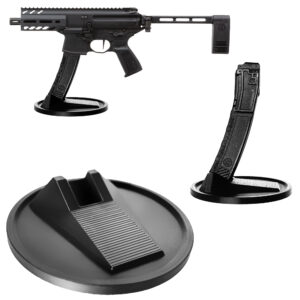
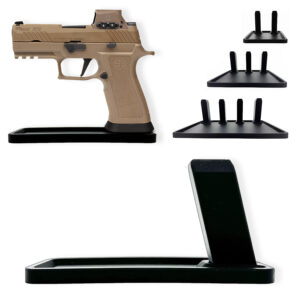
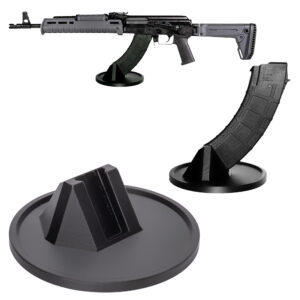


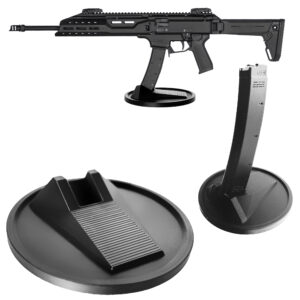
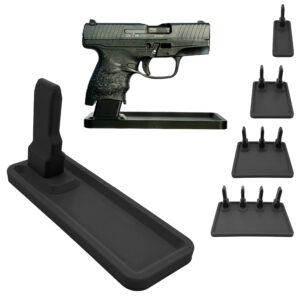

Colt
Colt M4 Carbine
Colt LE6920
Colt AR-15 A4
Daniel Defense
DDM4 V7
DDM4 V9
DDM4 V11
DDM4 ISR (Integrally Suppressed Rifle)
Smith & Wesson (S&W)
M&P15 Sport II
M&P15 Tactical
M&P15T
Bravo Company Manufacturing (BCM)
BCM Recce-16
BCM Recce-14
BCM MCMR Series
Aero Precision
M4E1 Series
AC-15
AR15 Pistol (Various Configurations)
Ruger
Ruger AR-556
Ruger SR-556
Ruger AR-556 MPR (Multi-Purpose Rifle)
Springfield Armory
Saint Victor
Saint Edge
Saint AR-15
PSA (Palmetto State Armory)
PSA PA-15
PSA AR-V
PSA Jakl (AR Pistol)
FN America
FN 15 Tactical Carbine
FN 15 Patrol
FN 15 DMR
Wilson Combat
Recon Tactical
Super Sniper
Protector Carbine
SIG Sauer
SIG M400 Tread
SIG M400 Elite
SIG M400 SDI
LWRC International
IC DI (Direct Impingement)
IC SPR
IC A5
Bushmaster Guns
XM-15 QRC
Bushmaster MOE
XM-15 Patrolman
Rock River Arms
LAR-15 Entry Tactical
LAR-15 Predator
LAR-15 Elite Comp
Stag Arms
Stag 15 Tactical
Stag 15L (Left-Handed Models)
Stag 15 Valkyrie
Noveske Rifleworks
Noveske Gen 4 N4
Noveske Space Invader (AR Pistol)
Noveske Recon
Anderson Manufacturing
AM-15 Optic Ready
AM-15 M4 Carbine
AM-15 Precision Rifle
Adams Arms
AA-15 Piston Rifle
P2 AARS (Adams Arms Rifle Series)
Black Rain Ordnance
SPEC15 Series
BRO Predator
Fallout 15
Diamondback Guns
DB15 Series
DB15CCMLB
DB15EB
Del-Ton Inc.
DTI-15
Del-Ton Echo 316H
Sierra 316M
Windham Weaponry
Windham SRC
Windham VEX-SS
Windham RMCS-4 (Caliber Conversion System)
Christensen Arms
CA-15 G2
CA-15 Recon
CA-15 Titanium Edition
Patriot Ordnance Factory (POF-USA)
Renegade Plus
P415 Edge
Revolution DI
LaRue Tactical
PredatAR
OBR (Optimized Battle Rifle)
LaRue Stealth 2.0
Battle Arms Development
Workhorse Patrol Carbine
BAD556-LW (Lightweight)
Authority Elite Rifle
Faxon Guns
Ascent AR-15
FX-19 (AR Pistol)
Streamline Ultralight Series
KE Arms
KE-15 SLT (Super Lightweight Tactical)
KE-15 Scout Carbine
Primary Weapons Systems (PWS)
MK1 MOD 2-M
MK116 PRO
MK107 (Piston AR Pistol)
ZEV Technologies
ZEV Core Elite Rifle
ZEV AR15 Billet Rifles
Franklin Armory
BFSIII AR-C1
Militia Model
F17-L (Chambered in .17 WSM)
Seekins Precision
SP15 DMR
NX15 Skeletonized Rifle
Havak Bravo
Aero Precision (Additional Models)
EPC-9 (Pistol Caliber ARs)
VG6 AR Rifles
Barrett Guns
REC7 DI
REC7 Gen II
CMMG
MK4 RCE
Resolute 300
Banshee (AR Pistol)
DPMS Panther Arms
Panther Oracle
Panther LR-308
H&K (Heckler & Koch)
HK MR556A1
HK416 (Military Variant)
Rock Island Armory (Armscor)
VR-80 Tactical AR (Shotgun AR Platform)
Troy Industries
Troy SPC-A3
Troy PAR (Pump Action AR)
Wilson Tactical
Tactical Recon AR
Protector Series
F1 Guns
FDR-15 Skeletonized Rifle
BDRx-15 Series
Juggernaut Tactical
JT-15
JT-10 Precision Rifle
AeroSurplus
Surplus AR-15 Rifles (Budget Models)
Thunder Tactical
AR-15 Basic Carbine
Tactical Builder Sets
Radical Guns
RF-15
Forged AR-Series
Dark Storm Industries
DS-15 Featureless Rifles
DS-10 Typhoon
DRD Tactical
Paratus
Aptus AR Rifles
Bear Creek Arsenal
BCA-15
AR Complete Upper Builds
Aero Survival Rifles (ASI)
ASR Tactical Series
Tactical Edge
WARFIGHTER Series
AR-15 Lightweight Rifles
Lone Star Armory
TX15 DMR
TX15 Carbine
HERA Arms
HERA H7
HERA AR-15 Lower Builds
IWI (Israeli Weapon Industries)
Zion-15
DRD Tactical
Tactical Modular Rifles
Quick-Takedown Rifles
V Seven Weapons
1776 Rifle
Hyperlite Rifle
Core Rifle Systems
Core15 Tac III
Core15 Patrol Rifle
Armalite (Original AR-15 Creator)
M15 Tactical
M15 A4 Carbine
DEF15 (Defensive Sporting Rifle Series)
PSA (Palmetto State Armory Additional Models)
PSAK-47 Hybrid (AR-AK Style Hybrid)
PSA Dagger (Pistol Caliber Configurations)
Odin Works
OTR-15
Odin Recon Rifle
Maxim Defense
MDX-508 PDX (Compact AR Pistol)
MDX-510 Rifle